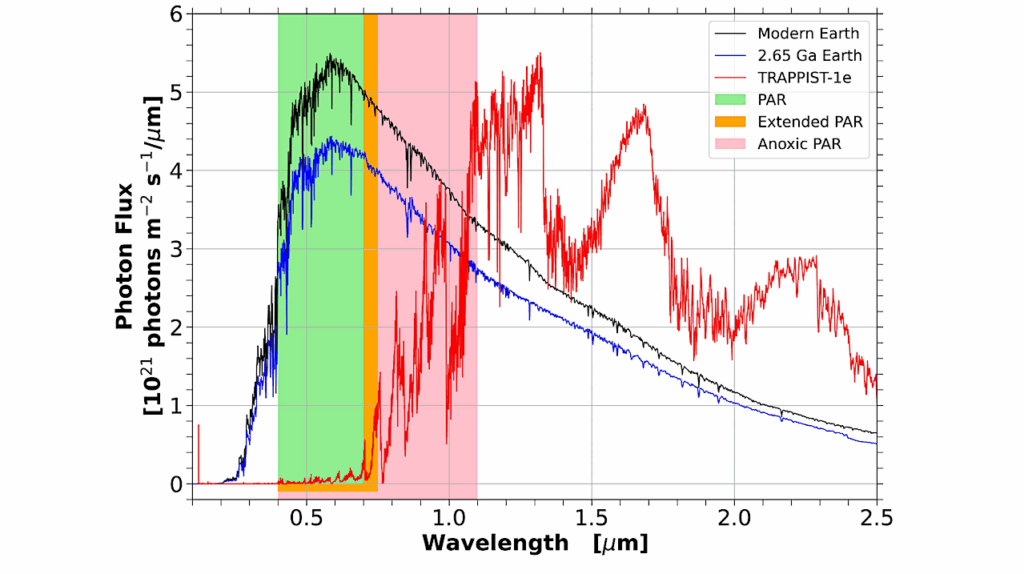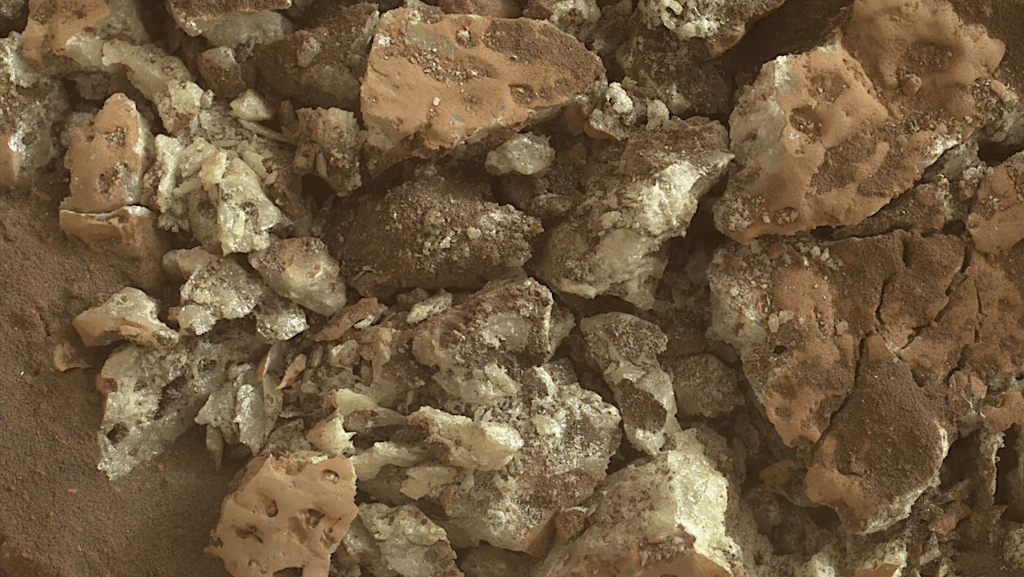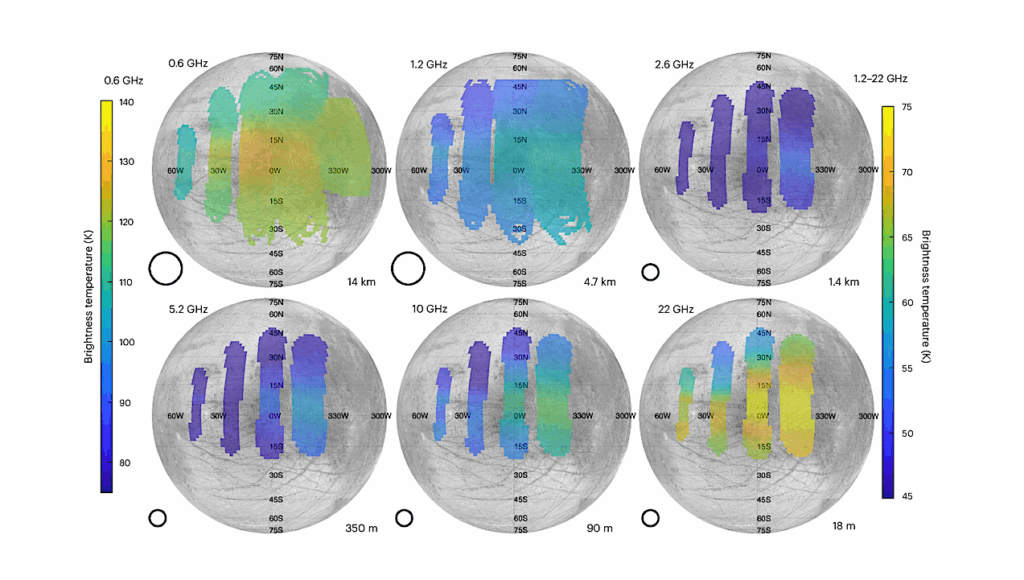Iceworld Morphology: Dome Craters on Ganymede and Callisto May Form by Topographic Relaxation of Pit Craters Aided by Remnant Impact Heat
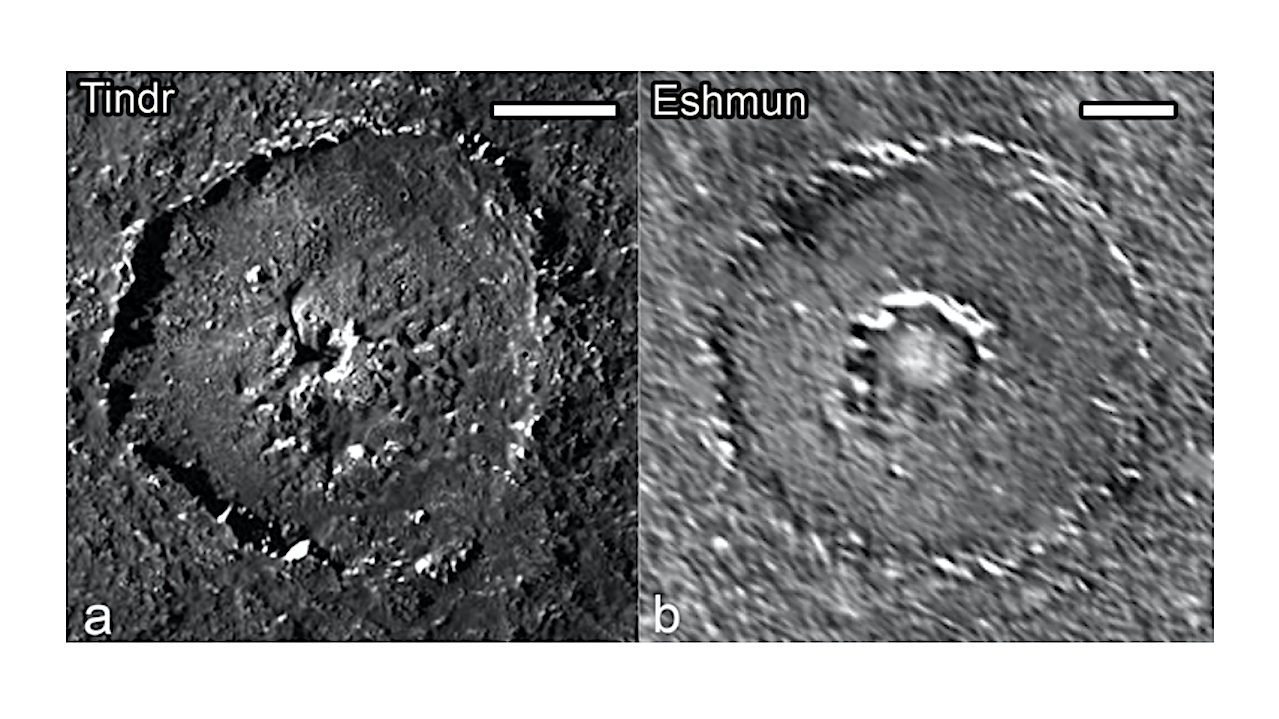
The icy Galilean satellites display impact crater morphologies that are rare in the Solar System. They deviate from the archetypal sequence of crater morphologies as a function of size found on rocky bodies and other icy satellites: they exhibit central pits in place of peaks, followed by central dome craters, anomalous dome craters, penepalimpsests, palimpsests, and multi-ring structures.
Understanding the origin of these features will provide insight into the geophysical factors that operate within the icy Galilean satellites. Pit craters above a size threshold feature domes. This trend, and the similarity in morphology between the two classes, suggests a genetic link between pit and dome craters. We propose that dome craters evolve from pit craters through topographic relaxation, facilitated by remnant heat from the impact.
Our finite element simulations show that, for the specific crater sizes where we see domes on Ganymede and Callisto, domes form from pit craters within 10 Myr. Topographic relaxation acts to eliminate the stresses induced by crater topography and restore a flat surface: ice flows downwards from the rim and upwards from the crater depression driven by gravity.
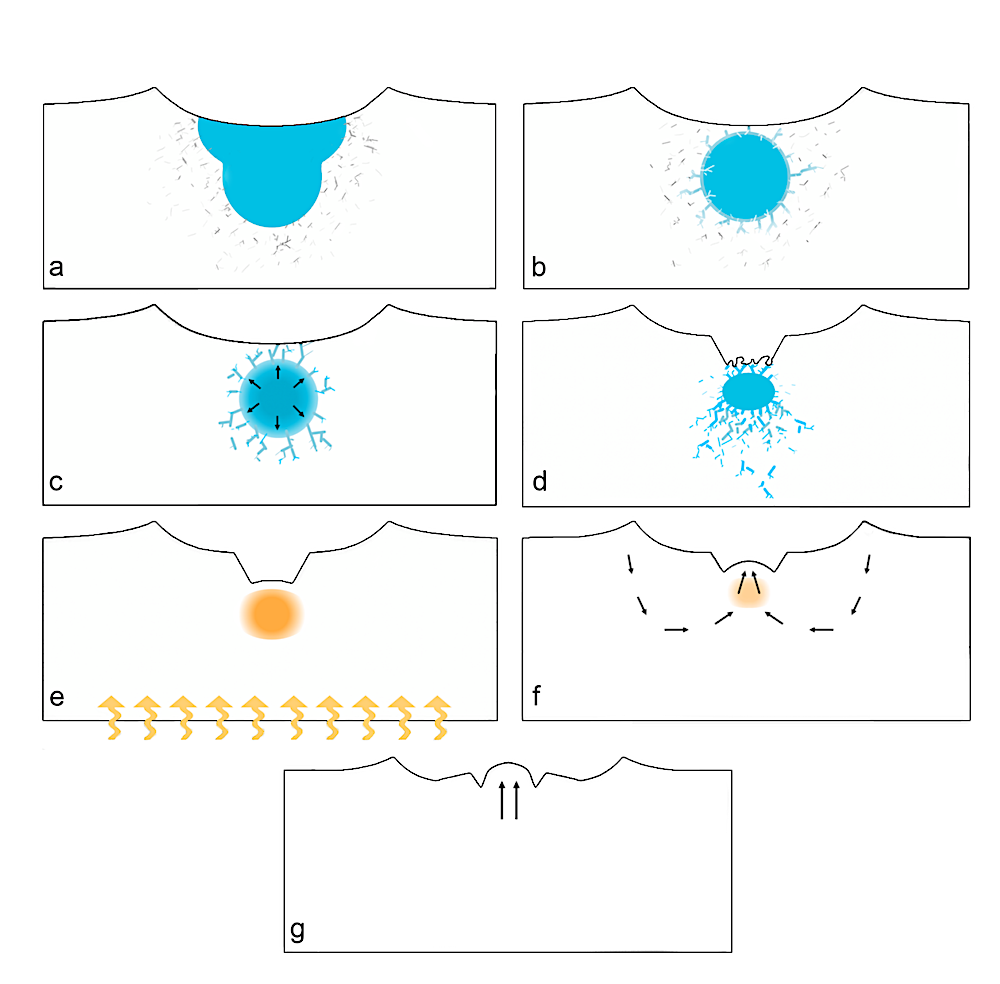
Scenario for pit and dome crater formation. a) Impact into icy target damages region and creates a large pool of meltwater (liquid water shown in blue). b) Melt pool cooling and freezing seals cracks in the damaged region, and surface freezing provides a roof. c) Volume expansion during solidification stresses and cracks the surrounding ice. d) Seal on melt pocket breaks and water drains into the damaged region. Roof collapses and pit forms. e) Melt solidifies, leaving warm pocket of ice below the pit, indicated by orange oval. f) Ice creeps, relaxing stresses induced by topography. Flow enhanced in the central region due to low viscosity. g) Preferential uplift in the central region causes dome to emerge from the pit. — astro-ph.EP
Martina L. Caussi, Andrew J. Dombard, Donald G. Korycansky, Oliver L. White, Jeffrey M. Moore, Paul M. Schenk
Subjects: Earth and Planetary Astrophysics (astro-ph.EP)
Cite as: arXiv:2403.15653 [astro-ph.EP] (or arXiv:2403.15653v1 [astro-ph.EP] for this version)
Submission history
From: Oliver White
[v1] Fri, 22 Mar 2024 23:57:18 UTC (35,559 KB)
https://arxiv.org/abs/2403.15653
Astrobiology,


